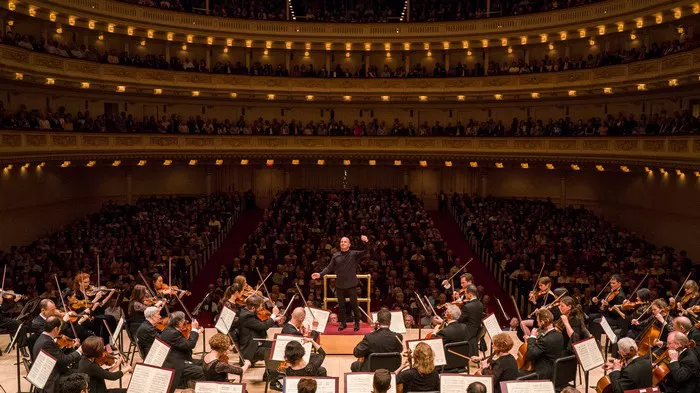Classical music, often synonymous with refinement and complexity, encompasses a vast and diverse array of styles that have evolved over centuries. From the intricate counterpoint of the Baroque period to the avant-garde innovations of the 20th century, classical music reflects the cultural, social, and technological changes of its time. Understanding the different types of classical music not only enriches our appreciation but also provides a glimpse into the historical contexts from which they emerged. This article delves into the various types of classical music, exploring their unique characteristics and the epochs they represent.
1. The Baroque Period (1600-1750)
The Baroque period is characterized by its elaborate musical ornamentation, contrasting dynamics, and the use of basso continuo. It marks the beginning of tonality, where music is based on a key center. Notable composers from this era include Johann Sebastian Bach, George Frideric Handel, and Antonio Vivaldi.
Key Features:
Complex Polyphony: Multiple independent melody lines played simultaneously.
Basso Continuo: Continuous bass line with improvised harmonies.
Contrast: Sharp contrasts in dynamics, textures, and timbres.
Notable Works:
Bach’s Brandenburg Concertos
Handel’s Messiah
Vivaldi’s The Four Seasons
2. The Classical Period (1750-1820)
The Classical period sought clarity, order, and balance, moving away from the complexity of the Baroque. This era saw the development of sonata form and the rise of the symphony and string quartet. Composers like Wolfgang Amadeus Mozart, Ludwig van Beethoven, and Franz Joseph Haydn epitomized this period.
Key Features:
Homophony: A single, clear melody with harmonic accompaniment.
Form and Structure: Emphasis on forms such as the sonata-allegro.
Expressiveness within Restraint: Elegant and refined emotional expression.
Notable Works:
Mozart’s Symphony No. 40
Beethoven’s Symphony No. 5
Haydn’s Surprise Symphony
3. The Romantic Period (1820-1900)
The Romantic period emphasized emotional expression, individualism, and the breaking of classical forms. Music became more programmatic, telling stories or depicting scenes. This era also saw the expansion of orchestras and the use of new instruments. Key figures include Johannes Brahms, Pyotr Ilyich Tchaikovsky, and Richard Wagner.
Key Features:
Expressive Melodies: Lyrical and expansive.
Rich Harmonies: Use of chromaticism and extended chords.
Programmatic Content: Music that tells a story or paints a picture.
Notable Works:
Brahms’ Symphony No. 1
Tchaikovsky’s Swan Lake
Wagner’s The Ring Cycle
4. The Impressionist Period (Late 19th Century – Early 20th Century)
Impressionism in music paralleled the visual art movement, focusing on atmosphere and mood rather than detailed expression. Composers like Claude Debussy and Maurice Ravel led this movement, using innovative scales, harmonies, and timbres to evoke imagery and emotions.
Key Features:
Ambiguous Tonality: Use of modes, whole-tone scales, and pentatonic scales.
Colorful Orchestration: Unusual combinations of instruments for unique sounds.
Fluid Rhythms: Flexible and flowing, avoiding strong beats.
Notable Works:
Debussy’s Clair de Lune
Ravel’s Boléro
Debussy’s La Mer
See Also: How Many Types Of Classical Music Are There In India?
5. The Modern Period (20th Century – Present)
The Modern period encompasses a wide range of styles and movements, reflecting the dramatic changes of the 20th century. From atonality and serialism to minimalism and electronic music, composers explored new ways of structuring music and expressing ideas. Significant composers include Igor Stravinsky, Arnold Schoenberg, and Philip Glass.
Key Features:
Atonality and Serialism: Music without a key center, using twelve-tone techniques.
Minimalism: Repetition of simple motifs and gradual changes.
Electronic Music: Use of electronic instruments and technology.
Notable Works:
Stravinsky’s The Rite of Spring
Schoenberg’s Pierrot Lunaire
Glass’s Einstein on the Beach
6. Early Music (Medieval and Renaissance Periods)
Early music, encompassing the Medieval (500-1400) and Renaissance (1400-1600) periods, laid the foundation for Western classical music. This era includes Gregorian chants, early polyphony, and the beginnings of harmonic exploration.
Key Features:
Monophonic Texture: Single melody lines in Gregorian chant.
Modal Harmony: Use of modes rather than major/minor scales.
Sacred and Secular Forms: Religious music alongside courtly and popular songs.
Notable Works:
Gregorian Chant: Dies Irae
Machaut’s Messe de Nostre Dame
Palestrina’s Missa Papae Marcelli
7. Contemporary Classical Music
Contemporary classical music is a broad term encompassing diverse styles from the late 20th century to the present. It includes both continuation and innovation of previous traditions, integrating global influences and interdisciplinary approaches.
Key Features:
Eclecticism: Blending various musical traditions and genres.
Technology Integration: Use of digital media and electronic instruments.
Collaborative and Interdisciplinary: Collaboration with other art forms and sciences.
Notable Works:
John Adams’ Short Ride in a Fast Machine
Arvo Pärt’s Spiegel im Spiegel
Jennifer Higdon’s blue cathedral
See Also: 10 Best Composers of the 21st Century [2024]
Conclusion
Classical music is a rich tapestry of evolving styles, each contributing uniquely to the overall landscape of the genre. From the intricate polyphony of the Baroque to the boundary-pushing experiments of the Modern era, classical music offers a profound journey through history and human creativity. Understanding these different types enriches our appreciation and highlights the incredible diversity within what might superficially seem a singular tradition. Each period, each style, and each composer adds a new layer to the ever-expanding world of classical music, ensuring its relevance and vitality for generations to come.

